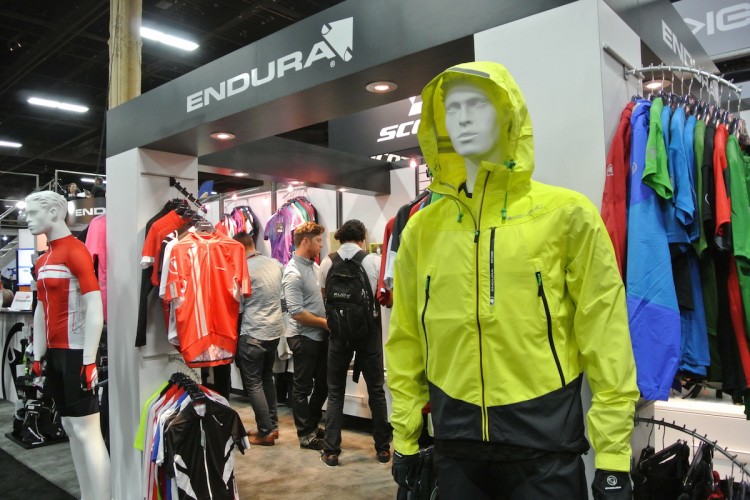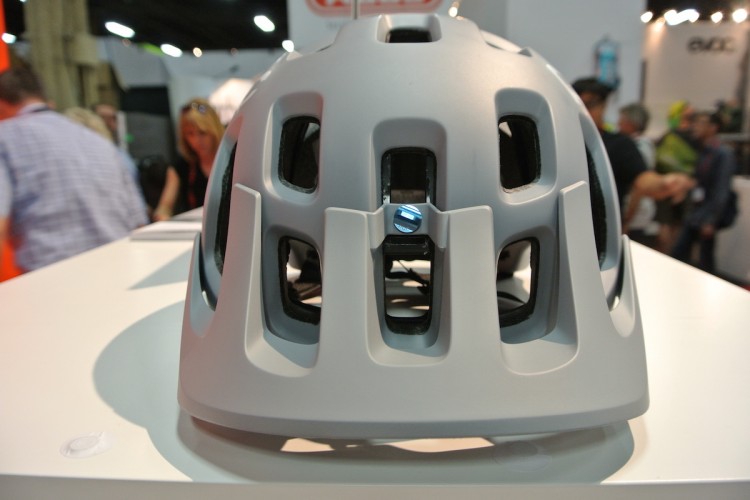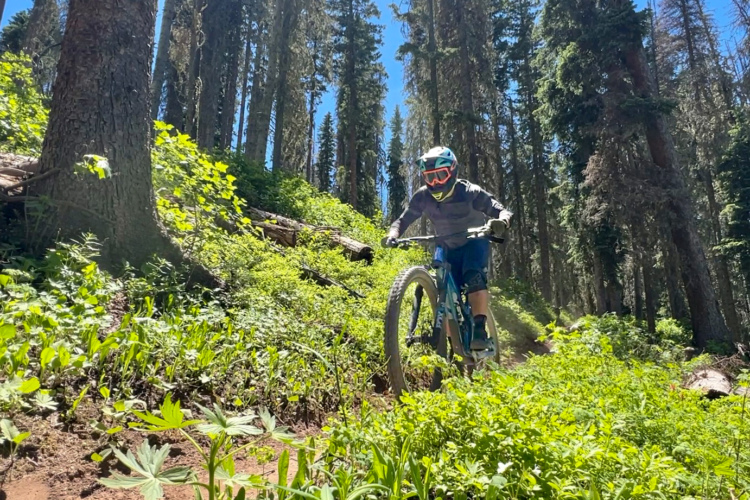
Editor’s Note: Chris Callahan started riding mountain bikes during Reagan’s first term. While Chris is a contributor to Singletracks.com, the opinions expressed in this commentary are his alone and do not necessarily represent the opinions of Singletracks.com.
“Do you see them over yonder, friend Sancho, thirty or forty hulking giants? I intend to do battle with them and slay them.” — Cervantes, Don Quixote
Don Alonso Quixote was mostly guilty of reading too much, letting his brain dry out, and then fantasizing that he alone could bring chivalry and justice back to the world. Kinda like what happens after my third or fourth post-ride IPA. This endorphin/alcohol-induced reverie can lead to dreaming up really fun stuff to do, like building up a wickedly unorthodox race bike that is, well, chivalrous and just.
Never mind that in the 50+ Grand Masters Class the average disposable income of my peers allows them the luxury of carbon fiber/unobtainium frames, 1×11 drivetrains, and featherweight componentry. What I’m looking for can’t be found at the latest Interbike. I’m looking for Purity. I’m looking for Gallantry. I’m looking for a Fine Blade with which to dispatch mine enemies.
I’m looking for a full-suspension, singlespeed race bike.
Yes, I recognize that such a contraption is the two-wheeled equivalent of taking a knife to a gunfight. But hear me out… there’s more than a few advantages hiding in this apparently ridiculous configuration.

Bike Setup
The full suspension enemy of putting power to the rear wheel is pedal bob. So a good place to start is to find a FS frame that has the swing arm pivot concentric with the bottom bracket. This not only limits the bob, but also takes concerns about “chain growth” off the table. No tensioners required. The only two purpose-built FS singlespeed frames that I know of are the Kona “A” 26er from 2005-2006 and the current Lenz Milk Money, which can be had with either 27.5- or 29-inch hoops.
Most singlespeeds run 32/16 or 32/18 gearing, which is a good start for a racing application. It allows you to power up the climbs without completely spinning out on the flats. For those with old or weak knees, a 20-tooth freewheel is a little more joint-friendly. Maybe my days of cranking a full-rigid 26er with 32/16 gearing can account for my current preference for a 32/20 drivetrain. (All I know is that I’m soon to discover what it’s like to pedal with an artificial knee. Your mileage may vary.)
For the most part, I keep it simple — cable-actuated brakes (Avid BB7s in my case) keep the weight down and are adequate for stoppers. Tires? I’ve found that in my neck of the Georgia woods, the gnarlier knobs the better; my current setup is tubeless Maxxis HighRollers in a 26×2.35 size. At 16-18 psi, they hook up well and don’t “pack up” like smaller knobs do. Fork? RockShox Recon Silver Air. On the rear, a RockShox Monarch RL, with lock-out.
The bottom line is that if you shop carefully, you can eBay your way to a relatively inexpensive build.
Climbing
If you have the quads, a singlespeed will climb faster than lightning on an escalator. But when you are riding the mountains of La Mancha, you’re going to need a Secret Weapon. Enter the remote fork lockout. This feature will stiffen your fork, eliminate the wasted motion (and energy) of being out of the saddle and, from my experience, seems to turbocharge your bike. A flick of the switch and you’ve got Space-X boost!
One of the big advantages to riding a singlespeed in competition is that you can pass nearly anyone on a climb. The gearing is such that if you keep your momentum and flail like a windmill, you’ll get to the top first. This is a huge competitive advantage.
Further, on a full-suspension bike, with the fork locked out and the rear wheel able to cling to the terrain, you’ve got amazing traction.
Chalk it up — Chivalry: One. Granny gears: Zero.

Descending
Most racers in the singlespeed class cleave to rigid bikes. They embrace the simplicity. They like the direct connection between pedals and dirt. A rigid fork means they know exactly what the front end is doing. And, yes, rigid singlespeeds are lightweight.
When the trail turns downhill, though, rigid singlespeeders also know how it feels when their joints turn to putty, their eyes knock about in their sockets, and their dental work begins to come adrift. On a rooty or rocky descent on a rigid bike, your thoughts turn not so much to the best line, that book you’re reading, or your girlfriend’s birthday next Thursday. Your thoughts are pretty much focused on survival — at least that’s what they’d be focused on if they weren’t being scrambled like a Greek diner omelette.
And here, folks, is where a full-suspension Quixote machine begins to shine. You can kill on the climbs and you can rip the descents. Unlock that fork and glide down that trail with grace and gallantry. Ah, justice!
Other Windmill-Slaying Wisdom
In racing, it’s all about finding an advantage. For some, it’s the latest tech; for others, it’s all about training and preparation. As paradoxical as it sounds, riding a full suspension singlespeed means choices. Most race organizers reserve a Singlespeed class for competitors. While I’ve raced singlespeeds for years, I’ve yet to enter that category. I’ve found that the truly, um, colorful riders populate that group. You know, those who look like they spend a lot of their time communing with larger wildlife and probably eat bark and berries. Hell, they probably rode their bike to the race venue. Not to take anything away from these guys and ladies — the SS category is usually filled with racers who are young, strong, intense, and merciless. (I once received a left-handed compliment from one of The Bark People, while on the starting line with the 50+ Grand Masters: “Duuuuude!!! You’re the OLDEST singlespeed rider I’ve EVER SEEN!!”)
[see_also id=”186048″][/see_also]
Yes, I take my FS SS advantages to my age group. If my peers have a granny gear, they’ll use it on a climb, and I’ll pounce. If their bike is also springy on both ends, I can stay with them on the descents. The only place I lose — sometimes — is on the flats, where my competitors can shift to the big ring and blow me kisses goodbye. Through the years, though, I’ve found that the FS SS advantages hold, irrespective of age. And mostly, I finish on the podium.

Don Quixote rode a horse named Rocinante. The poor horse is described as “awkward, past his prime and engaged in a task beyond his capabilities.” My guess is that if Good Old Don suddenly found himself whisked from the 17th to the 21st century, he’d be riding a full suspension, singlespeed race bike.
If for no other reason, than for the sheer Chivalry and Justice of it all.
“The most perceptive character in a play is The Fool, because the man who wishes to seem simple cannot possibly be a simpleton.” — Cervantes, Don Quixote





















6 Comments
Jan 27, 2020
Jun 10, 2017
Jun 12, 2017
Jan 27, 2020
Nov 29, 2019
It’s all about what’s right for the trails you ride, your own fitness level and how much weight you want to push around. But I found the slight weight penalty of a suspension fork was more than compensated for by the added comfort and endurance.
Keep riding! Cheers!
Nov 29, 2019